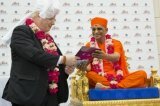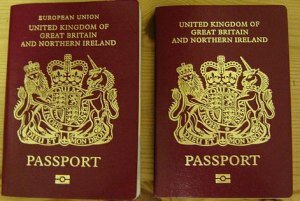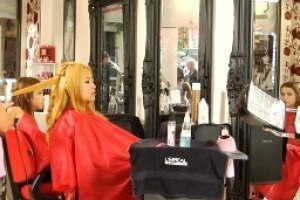Term 'British Asian' doesn't recognise diversity of second-gen Asians: Policymakers
The experts’ view came after a roundtable discussion at LSE on cohesion, integration and social mobility among the Asian communities in the UK.
A pilot study presented at the roundtable revealed that even Hindu Bengalis and Muslim Bengalis that live side by side in the East London Borough of Tower Hamlets have different experiences.
This is, despite that the fact that the two communities come from the same ethnic group, speak the same language, migrated at approximately the same time, have the same socio-economic origins, emigrated from the same region – Sylhet in Bangladesh – and settled in the same places.
According to the study by Dr Indraneel Sircar, visiting fellow at LSE, and Dr Jyoti Saraswati, a lecturer at New York University in London, Hindu Bengalis from Tower Hamlets show relatively high levels of social mobility when compared to the findings of research on other Asian communities in East London.
Although the first-generation had largely come without professional qualifications and took up ‘blue collar’ jobs in East London, most of the second-generation respondents worked in ‘white collar’ professions, such as jobs in the financial sector or as medical doctors, the experts noted
The second-generation felt high levels of self-identification with the term ‘British’ relative to other options, the study’s authors said.
They felt least affinity with the term ‘Asian’ when choosing between ‘Asian’, ‘Bengali’, ‘British’, ‘Hindu’ and ‘Indian’ because they felt it had negative connotations, particularly in the media, the research further found.
More like this
Hindu Bengalis, and British-born Asians in general, in London were found to prefer more nuanced identities instead of umbrella terms such as ‘British Asian’.
Lack of social integration
However, the research indicated that second-generation Hindu Bengalis were not socially integrated. A vast majority (80%) of the respondents had some or many of their closest friends within the Hindu-Bengali community. Of those who had long-term partners, only one respondent had married outside of the community.
“We need to appreciate the ‘diversity of diversity’ within the British Asian communities rather than thinking about them as a uniform entity,” Dr Sircar said. “This means policymakers tackling issues such as social mobility or integration by ethnic group, religion, class, gender or generation.”
Experts also argued that the experiences of British Asians are affected by factors such as where they settle, whether they are first, second or third generation and the socio-economic background of the first generation.
A counter-intuitive intergenerational pattern discussed was that the older generation, even from traditional and rural backgrounds, may have been involved in the anti-racism movement, joined the Labour party and had social circles across different Asian communities.
In contrast, the subsequent generation may be more traditional with, for example, British-born Muslim men growing beards and British-born Muslim women wearing the niqab.
Another factor affecting the experience of British Asians is their aspiration to return home. This may help explain the differences between the Hindu Bengali and Muslim Bengali communities in Tower Hamlets.
It was argued that first generation Muslim Bengalis in East London always had the intention of returning to the ‘homeland’. Thus this community was less likely to actively integrate with education, housing and employment in the UK.
By contrast Hindu Bengalis left, sometimes as persecuted minorities in a Muslim-majority country, to establish a new life in the UK. So, in contrast, there is no homeland for them to go back to, the experts noted.
Most read
- 2015: Full list of Indian States, capitals and their Chief Ministers
- Indian cabinet 2014: Full list of Ministers and their portfolios in the Modi government
- Recipe: Misal Pav – how to make missal masala, usal and tarri
- Review: Southall Travel (Also Travel Trolley and Fly Sharp)
- Deepika Padukone starrer women-power film 'My Choice' becomes an online sensation
- South Indian actress Trisha Krishnan’s father passes away
- Katrina Kaif visits London Madame Tussauds to unveil her own wax statue
- Commonwealth Games 2014: Full list of Indian gold, silver and bronze medal winners
- Review: VFS Global Joint Visa Application Centre in Paddington
- Ileana D’Cruz and Virat Kohli sizzle in TV ad for Clear anti-dandruff shampoo
India News Bulletin by email
Desi Events
Featured Stories
More Lead Stories
- Review: Southall Travel (Also Travel Trolley and Fly Sharp)
- Long stay Indian visitors, students, professionals to pay for NHS access
- Mahatma Gandhi statue erected in London’s Parliament Square
- Pics: Deepika Padukone and Irrfan Khan’s blossoming chemistry in Piku
- Pics: Priyanka Chopra and Freida Pinto back the ‘Girl Rising’ campaign in India






















